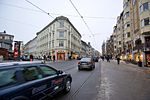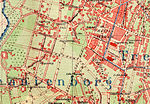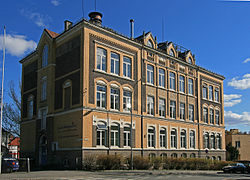Hjelmsgate 3
1858 establishments in NorwayAC with 0 elementsAnarchism in NorwayBuildings and structures in OsloCounterculture ... and 4 more
Legalized squatsRestaurants in OsloSocial centresSquatting in Norway

Hjelmsgate 3 is a self-managed social centre in Oslo, Norway. The wooden house was constructed in 1858 and from the late 1960s onwards it has been a central node in the Norwegian counterculture.
Excerpt from the Wikipedia article Hjelmsgate 3 (License: CC BY-SA 3.0, Authors, Images).Hjelmsgate 3
Hjelms gate, Oslo Frogner
Geographical coordinates (GPS) Address Nearby Places Show on map
Geographical coordinates (GPS)
| Latitude | Longitude |
|---|---|
| N 59.9251 ° | E 10.7221 ° |
Address
Hjelms gate 4B
0355 Oslo, Frogner
Norway
Open on Google Maps









